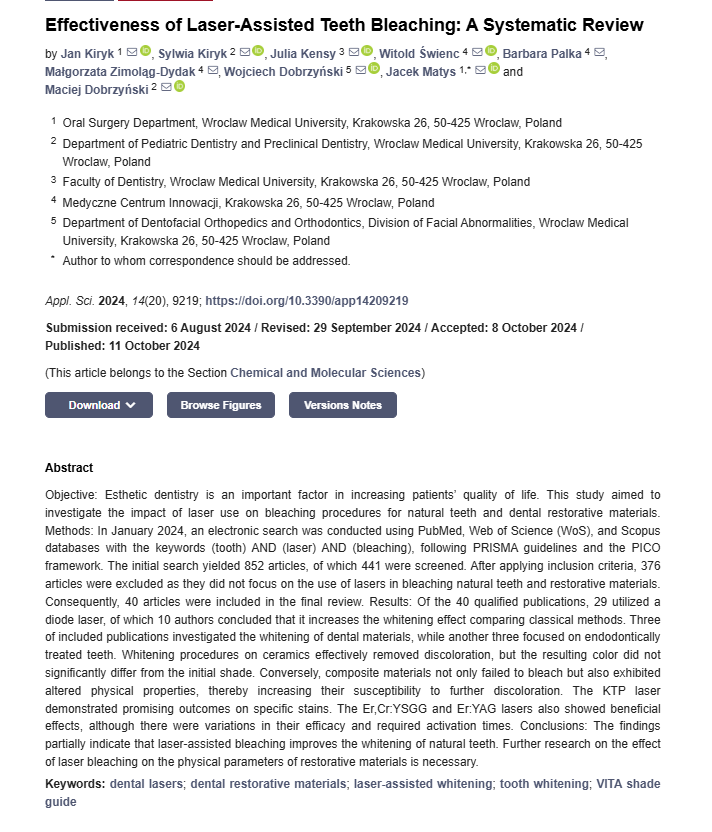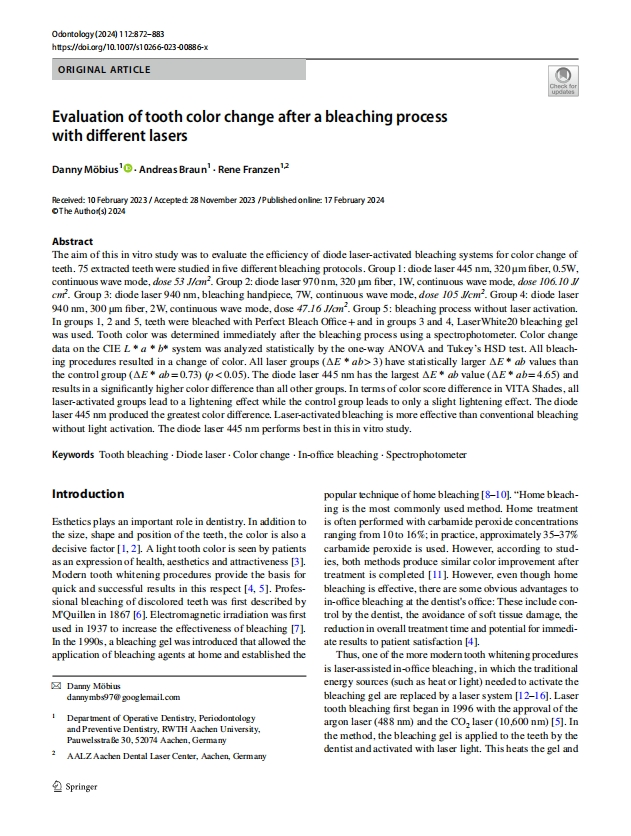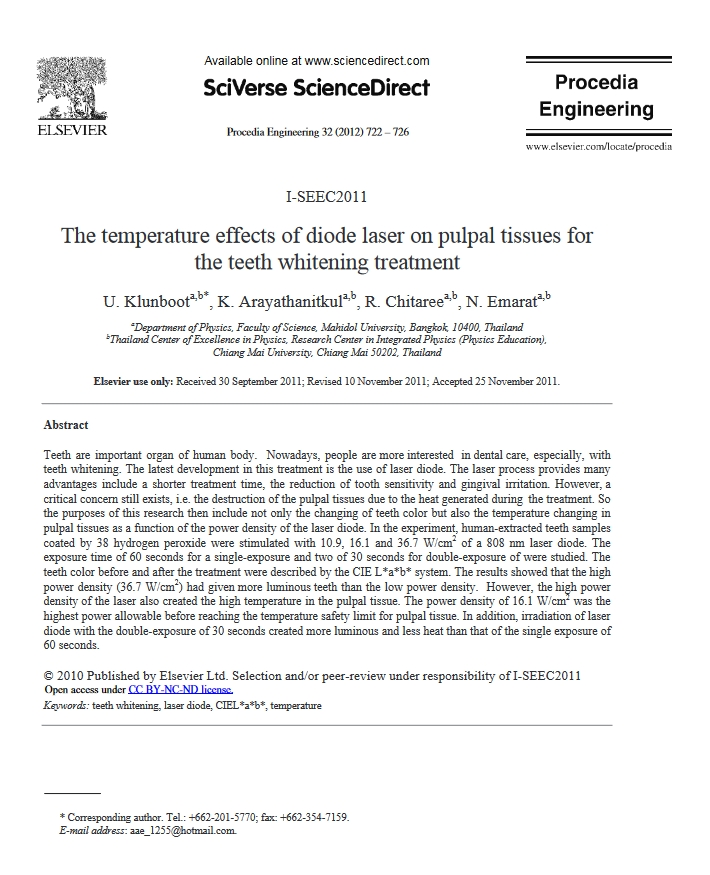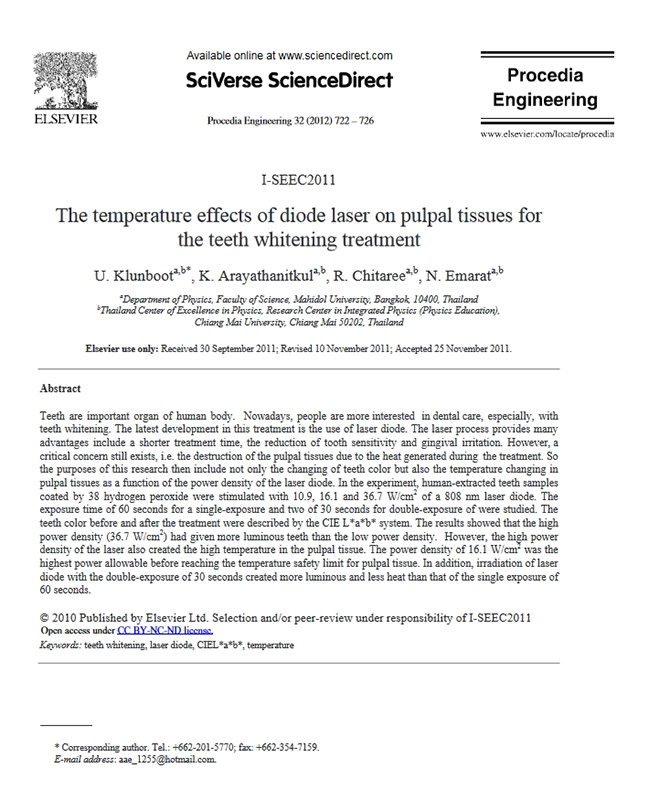Effectiveness of Laser-Assisted Teeth Bleaching: A Systematic Review
This systematic review evaluated 40 studies (in vitro and in vivo) to assess how lasers affect the whitening of natural teeth and dental restorative materials, compared to conventional bleaching. Diode lasers (808-980 nm) were used most often; about a quarter of these showed better whitening than standard methods. KTP, Er: YAG, and Er,Cr: YSGG lasers also demonstrated beneficial effects, though with more variability in efficacy and longer exposure in some cases. In contrast, argon and AsGaAl lasers were generally not more effective than conventional bleaching. Restorative materials, such as composites and ceramics, showed limited or no substantial whitening; composites in some studies even suffered adverse changes in surface properties and increased risk of future discoloration. The review concludes that laser-assisted bleaching can improve outcomes for natural teeth, but more research is needed, especially regarding safety and effects on restorative materials.




